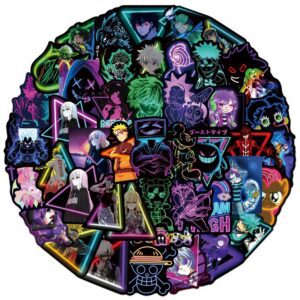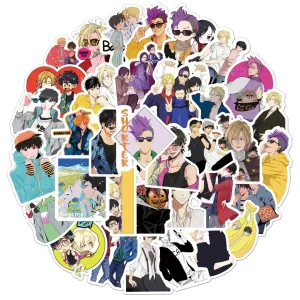There are a select number of games that fit industry monetization perfectly. Whether through some ominous prophetic wisdom or simply through sheer miserable coincidence, they’re structured perfectly to accommodate greed. From the inherently milkable longevity of MMOs to the potential for cosmetic peacocking in every single death-cam shooter. But perhaps more than any of them, card games are the most potent vector.
By virtue of being adapted straight from reality, they are the only genre capable of selling loot boxes without issue. That’s all ‘booster packs’ really are, right down to the rarity system. So, card games can get away with peddling almost every card in their library through chance.
That was the model most DCCGs (digital collectible card games) were built after. Hearthstone, MTGArena, Gwent, Elder Scrolls Legends, and Artifact all did precisely the same thing. Offer a base set of uninspired cards and make players pay for a chance at everything else. But that philosophy is far from the only way to execute a card game. Konami demonstrated that perfectly, with Yu-Gi-Oh! Legacy of the Duelist: Link Evolution offering all nine thousand cards for free.

In the case of Blizzard, arguably the progenitors of loot boxes, card games inspired them. After the monster success of Hearthstone, they inserted loot boxes into every game they could. Heroes of the Storm, StarCraft 2 and most notably Overwatch became riddled with the things. They only spared Diablo 3, which was already suffering wounded PR, and WoW, a game paid for in perpetuity. Overwatch may well have innovated the loot box, but Hearthstone inspired it.
Not Just Cosmetic
Not only are they capable of inspiring the worst industry trend to date, but they’re also the worst form of it. While the loot boxes in Overwatch were (barely) defensible as cosmetic only, that’s never true of DCCGs. You’re paying for cards, the innate thing used to play and to win games. Without a sufficient collection, you’re going to get annihilated, as well as being generally unable to do anything fun. It’s something most people find acceptable as an inherent fact of card games, but it really shouldn’t be.
It’s not like you only have to do this once, either. With every single expansion, there’s a new set of cards you need to remain competitive. And with old ones cycling out of the most popular modes, it pushes you even more to invest.

An expansion in Hearthstone can easily cost up to several hundred pounds if you want to complete your collection. And there have been twelve of them. That’s well over a thousand pounds of cumulative expenses, minimum. Just to keep up to date with the title throughout its development.
I’ve got about half the available cards myself, and I’ve spent over one thousand three hundred pounds on that fucking game. Simply because it was small, incremental purchases I never thought would amount to that total. It was only in adding them up to write this article I discovered the real number. So, they’re not defensible as cosmetic and they’re not defensible as optional. This is the real cost of DCCGs.
The Sunk Cost Fallacy
There’s a reason people stay loyal to titles that drain your wallet like this. People think that once you’ve paid money into something, you’re invested. Obligated to find time and joy out of it, or you’ve wasted that money. It’s a reasonable expectation to have a normal title. A game sold is a game you expect to enjoy to completion, and you’re likely to see it through.
However, with a card game, it isn’t a single investment. With every new expansion, you have to invest again to keep getting enjoyment out of it. And after all, since you’ve paid all that money already, what’s another fifty to keep having fun?
For people that get succored into it, you basically have to uninstall it and forget it ever existed. It’s the only way to escape it. And if you do that, you’re throwing away something you’ve invested thousands into. That’s the cycle that gets people paying a thousand pounds for a card game whipped together in unity.
The Lie of In-Game Currency
Each of these titles usually includes an in-game currency won through matches you can use to buy things. It seems generous, as you can usually afford a pack every day or two just playing it normally. But that only amounts to around thirty a month. And that really isn’t a lot. It can take hundreds to get the cards you need to build a decent deck for each playable class. Hell, most games have two in-game currencies and they’re not enough combined to make decks without paying.
Some games are more generous in this regard. MTGArena gives you entire viable decks for completing its introductory quests. Its wildcard system allows you to turn them into any card in the game, and they come alongside packs. However, that still means you have to pay for them essentially. So, while these titles vary in charity, none is entirely charitable.
The Appeal of Card Games
So, if they’re so horribly expensive, why do they retain players? Well, outside of the fact few realise how much they’ve actually spent, it’s simple. They’re just fun. For the same reason card games have always been fun. They’re a perfect blend of turn-based strategy mechanics and elegant simplicity that’s immensely rewarding to master. In their physical form, they’ve maintained popularity for years. They’re even more popular in digital form, with refined mechanics and enhanced graphics.

Besides this, they’re ideal casual games. Something that requires little narrative or gameplay investment and suits multi-tasking perfectly. Even without dual monitors, you can easily watch a show or a movie, or even write or edit one while playing. There’s nothing better for alt-tabbing in and out of than a decent card game. They’re also far easier to drop in and out of, as games rarely last more than ten minutes.
Conclusion
The very reason I’ve invested so heavily into these titles is that I love them. I’ve always loved card games. But I had an issue with spending far too much on the physical ones. I’ve spent over a thousand on Yu-Gi-Oh alone by this point. But at least I can show that collection off.
I thought I could reconnect with that love by using digital card games without the crippling financial burdens. But if anything, they’re worse. I don’t have to worry about shipping or finding reputable sellers. And they’re far easier and more readily available to purchase.
I’ve had to stop playing card games for my own financial security. And for once, I’m not the only weird freak having this issue. Plenty of people have wasted thousands throwing money at digital cards. There are hundreds of cases of people spending that much in Hearthstone in a single night. Any game that even allows you to make that stupid decision is evil.













